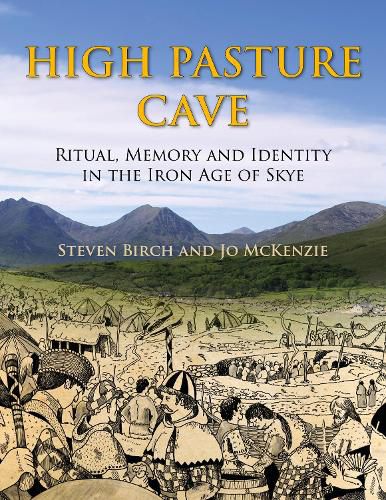Readings Newsletter
Become a Readings Member to make your shopping experience even easier.
Sign in or sign up for free!
You’re not far away from qualifying for FREE standard shipping within Australia
You’ve qualified for FREE standard shipping within Australia
The cart is loading…






High Pasture Cave, located on the island of Skye, Scotland, occupies a liminal location on the very edge of a settlement, and appears to have been a focus for specific and special activities. Its extended period of use is indicated by ephemeral signs of Neolithic Activity, limited Bronze Age usage, and vast artefactual and environmental assemblages recovered dating to the Early to Middle Scottish Iron Age, c. 800 BC to AD 150.
High Pasture Cave details the research-led excavations at the cave and its context in the landscape, including geology and stratigraphy, the use and transformation of the cave from the Neolithic, post-Medieval activity after the site’s closure, chronology and radiocarbon dating, the human remains, and stable isotope analysis.
The examination of the site indicates that the High Pasture Cave Complex was a special place, a focus for significant communal events, for undertaking ritual and special activities, and a place for deposition of significant objects - a place whose significance remained embedded in social memory long after active use ceased. These findings challenge our current understanding with regards to cave use and function, and with relation to the wider understanding of Iron Age cultural and religious beliefs.
$9.00 standard shipping within Australia
FREE standard shipping within Australia for orders over $100.00
Express & International shipping calculated at checkout
High Pasture Cave, located on the island of Skye, Scotland, occupies a liminal location on the very edge of a settlement, and appears to have been a focus for specific and special activities. Its extended period of use is indicated by ephemeral signs of Neolithic Activity, limited Bronze Age usage, and vast artefactual and environmental assemblages recovered dating to the Early to Middle Scottish Iron Age, c. 800 BC to AD 150.
High Pasture Cave details the research-led excavations at the cave and its context in the landscape, including geology and stratigraphy, the use and transformation of the cave from the Neolithic, post-Medieval activity after the site’s closure, chronology and radiocarbon dating, the human remains, and stable isotope analysis.
The examination of the site indicates that the High Pasture Cave Complex was a special place, a focus for significant communal events, for undertaking ritual and special activities, and a place for deposition of significant objects - a place whose significance remained embedded in social memory long after active use ceased. These findings challenge our current understanding with regards to cave use and function, and with relation to the wider understanding of Iron Age cultural and religious beliefs.